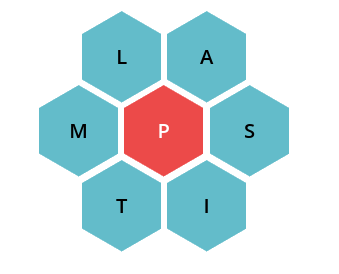

Lifeguard training FAQs and support: A Comprehensive Guide
Lifeguarding is not just a summer job; it’s a vital role that requires extensive training, vigilance, and preparedness. The American Lifeguard Association (ALA) is committed to providing comprehensive training programs that equip lifeguards with the skills they need to save lives. Whether you’re considering a career as a lifeguard or are already in training, you may have several questions.
This guide will cover the most frequently asked questions about Lifeguard training FAQs and support available through the ALA.
1. What is Lifeguard Training?
Lifeguard training involves a series of courses designed to teach individuals the essential skills and knowledge necessary to prevent and respond to aquatic emergencies. The training typically covers areas such as water rescue techniques, first aid, CPR (cardiopulmonary resuscitation), and AED (automated external defibrillator) usage. The goal is to prepare lifeguards to act quickly and effectively in various situations, from minor incidents to life-threatening emergencies.
1.1 Who Needs Lifeguard Training?
Lifeguard training is crucial for anyone planning to work as a lifeguard at public pools, beaches, water parks, or any other aquatic facility. It is also beneficial for individuals involved in water-related activities, such as boating or diving, who wish to enhance their safety knowledge and skills.
2. What Does Lifeguard Training Involve?
Lifeguard training typically consists of several key components:
2.1 Classroom Instruction
Participants learn about water safety, drowning prevention, and the legal responsibilities of a lifeguard. The ALA provides a detailed curriculum that covers the fundamental concepts necessary for effective lifeguarding.
2.2 Practical Skills Training
This hands-on portion of training includes practicing rescue techniques, performing first aid, and mastering CPR and AED use. Lifeguards must demonstrate their ability to perform these skills competently in simulated scenarios.
2.3 Written Exam
To ensure comprehension of the material, trainees must pass a written exam covering all aspects of the training. This helps to reinforce the knowledge gained during the course.
2.4 Swim Test
Candidates must demonstrate proficient swimming skills, which typically involve swimming a certain distance and performing specific strokes. This test ensures that future lifeguards have the physical capability to perform rescues in the water.
3. How Long Does Lifeguard Training Take?
The duration of lifeguard training can vary depending on the program and the individual’s schedule. Typically, courses range from 20 to 40 hours over several days or weekends. The ALA offers flexible training options to accommodate different learning styles and schedules.
4. What Are the Requirements for Lifeguard Training?
To enroll in a lifeguard training program, participants must meet certain prerequisites:
- Age: Most programs require participants to be at least 15 years old by the course completion date. Some courses may have different age requirements.
- Swimming Skills: Candidates must demonstrate proficient swimming abilities before enrollment. This often includes swimming a certain distance, performing a specific stroke, and retrieving an object from the bottom of the pool.
- Health and Fitness: Trainees should be in good physical health, as the training can be physically demanding.
5. How Can I Register for Lifeguard Training?
Registering for lifeguard training through the American Lifeguard Association is simple:
- Visit the ALA Website: The ALA provides a comprehensive list of training courses available across various locations.
- Choose a Course: Review the available courses and select one that fits your schedule and needs.
- Complete the Registration Form: Fill out the required information and submit your registration online.
- Payment: Make the payment for the course, which may vary based on location and training duration.
- Prepare for Training: Once registered, review any materials provided by the ALA to prepare for your training.
6. What Support is Available During Training?
The American Lifeguard Association is dedicated to supporting trainees throughout their lifeguard training experience:
6.1 Instructors and Mentors
ALA-certified instructors are experienced professionals who provide guidance, support, and encouragement throughout the training process. They are available to answer questions, clarify concepts, and assist with skills practice.
6.2 Online Resources
The ALA offers a variety of online resources, including training manuals, instructional videos, and practice quizzes. These materials can help reinforce learning and provide additional support outside of classroom instruction.
6.3 Community and Networking
Participants in ALA training programs become part of a larger community of lifeguards and water safety professionals. This network can provide support, advice, and job opportunities after certification.
7. What Happens After Training?
Upon successful completion of the training program, participants receive certification as a lifeguard. This certification is valid for a specific period, usually two years, after which lifeguards must undergo recertification to maintain their skills and knowledge.
7.1 Lifeguard Recertification
The ALA offers recertification courses to help lifeguards refresh their skills and stay current with the latest safety protocols. These courses typically require fewer hours than initial training and often include both written and practical components.
7.2 Continuing Education
Lifeguards are encouraged to pursue continuing education opportunities to expand their knowledge and skills. This can include advanced rescue techniques, water safety education, and additional certifications such as First Aid and CPR instructor courses.
8. Frequently Asked Questions
8.1 How Much Does Lifeguard Training Cost?
The cost of lifeguard training can vary based on the location and program. Typically, courses range from $200 to $400, which may include materials, certification fees, and access to online resources.
8.2 Is Lifeguard Training Worth It?
Yes, lifeguard training is a valuable investment. It not only equips individuals with essential life-saving skills but also opens up job opportunities in various aquatic settings. Furthermore, the experience gained through training can be beneficial for future career paths, especially in health and safety.
8.3 Can I Lifeguard Without Certification?
No, certification is a requirement for lifeguarding. It ensures that individuals possess the necessary skills and knowledge to perform effectively and safely in an aquatic environment.
8.4 What Should I Bring to Lifeguard Training?
Participants should come prepared with the following items:
- A swimsuit and towel
- Water bottle for hydration
- Notepad and pen for taking notes
- Any required forms or identification
Also Read About: Lifeguard Recertification: How to Stay Certified and Ready to Save Lives
Conclusion
Lifeguard training is a critical step for anyone interested in pursuing a career in water safety. The American Lifeguard Association provides comprehensive programs designed to equip individuals with the necessary skills, knowledge, and confidence to excel as lifeguards. With dedicated support, extensive resources, and a commitment to excellence, the ALA is your trusted partner in training for a safe and successful lifeguarding career. Whether you’re a beginner or looking to refresh your skills, the ALA has the resources and support you need to thrive in this essential role.
















Přijetí hypoteční platby může být problematické pokud nemáte rádi čekání v dlouhých řadách , vyplnění vážný formuláře , a odmítnutí úvěru na
základě vašeho úvěrového skóre . Přijímání hypoteční platby může být problematické, pokud nemáte rádi čekání v dlouhých řadách , podávání extrémních
formulářů , a odmítnutí úvěru na základě vašeho úvěrového skóre .
Přijímání hypoteční platby může být
problematické , pokud nemáte rádi čekání v dlouhých řadách , vyplnění
extrémních formulářů a odmítnutí úvěrových rozhodnutí založených na úvěrových skóre
. Nyní můžete svou hypotéku zaplatit rychle a efektivně v České republice. https://groups.google.com/g/sheasjkdcdjksaksda/c/QFLe8JFH31k
Přijetí hypoteční platby může být problematické pokud
nemáte rádi čekání v dlouhých řadách , vyplnění
vážný formuláře , a odmítnutí úvěru na základě vašeho úvěrového skóre .
Přijímání hypoteční platby může být problematické,
pokud nemáte rádi čekání v dlouhých řadách , podávání extrémních formulářů
, a odmítnutí úvěru na základě vašeho úvěrového skóre .
Přijímání hypoteční platby může být problematické , pokud nemáte rádi čekání v
dlouhých řadách , vyplnění extrémních formulářů
a odmítnutí úvěrových rozhodnutí založených na úvěrových skóre .
Nyní můžete svou hypotéku zaplatit rychle a efektivně v České republice. https://groups.google.com/g/sheasjkdcdjksaksda/c/QFLe8JFH31k